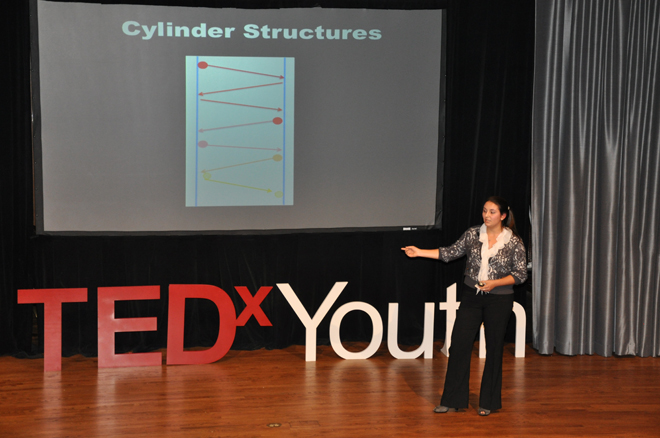
Weinberg freshman Julia Abelsky spoke at the TedxYouth@TheBeltline 2013, an independently organized TED Talk-like event, on Nov. 17 in Atlanta about her research in achieving invisibility. Abelsky has won 40 awards for her research in the last two years, including second place at the Intel International Science and Engineering Fair. NBN sat down with the Atlanta native and Northwestern fencer about managing workloads, pre-talk jitters and the possibility of replicating Harry Potter’s invisibility cloak in real life.
What inspired you to begin researching about achieving invisibility?
I thought it would be cool to do something hands-on beyond the routine memorization of numbers and facts for classes. I started reading about nanotechnology and nanoscience since they were both up-and-coming fields. I got involved and started researching about the fields. Honestly, it all started with a Google search, which then led me to Google Scholar. I went from one article to the next, looking from one article of reference until I got into three binders of articles and journals as references.
What did your research involve?
My experiment was looking at how I can control the pathway of light. Right now, light hits surfaces and bounces off of them. So, I wanted to look and see how it bounced off and in which direction. Once I did that, I looked to see if I could control the light to prevent it from bouncing off. I did cloaking testing with nanocomposites, cloaking aluminum and gold nanocomposites. I looked pretty far into the invisibility aspect and eliminating light scatter off a material to prevent humans from being able to see it. I essentially looked at creating a manmade way to change the way light moves through a material. Invisibility is the one that catches people’s eyes, but the research also has a lot of applications for lenses, glasses and microscopes.
Were you nervous before the Ted Talk?
It was definitely very stressful. I was very nervous, but I had no way out. If I had a way out, I definitely would have taken it. I think first it started out a little shaky because I was so nervous. But then I realized that everyone came here to listen to what I was working on for the past two years, and the nerves were only preventing me from sharing my story to the best of my ability.
How do you balance research, fencing and other commitments?
It was definitely tough because I was fencing about 20 to 25 hours a week, and I was trying to do 10 hours in the lab. With good time management, it was possible. The fact that I was so interested in both made me excited about doing both even though it did leave me little free time. I was happy spending my free time doing both those activities.
What do you think about Harry Potter’s invisibility cloak?
I’m definitely one to say that it is possible. In my project, I successfully cloaked small material, very small nanocomposites or really small particles. So I think once you’re cloaking something, it only takes time for something of a larger size to also be cloaked. Something I said in my talk was that several decades ago, we thought human flight was impossible, and now we think invisibility is impossible. So, now that we’ve achieved human flight, research also has the ability to achieve invisibility. Now that we’ve imagined it, it just needs to come to reality.